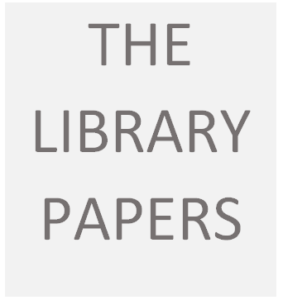21st Century Literacies
Reading Review 1
Inquiry-based learning and other self-directed learning models open up new areas of possibility for teaching and learning. I think that is the point Richardson is making in Why School? when he cites Canadian educator Stephen Downes: ““we have to stop thinking of an education as something that is delivered to us and instead see it as something we create for ourselves” (Downes, cited in Richardson, 2012).
But this kind of self-directed learning also calls for new ways of supporting teachers and students as the students develop these skills. Collaborative planning between the classroom teacher and the Teacher Librarian is key (Fontichiaro & Oehrli, 2014), but once the overall instructional plan is in place, more specific support seems needed. For this assignment, I want to explore in more detail how the use of digital technology would support self-directed learning environments. I think this knowledge would be applicable at all levels, for all subject areas.
Some of the key terms that keep coming up as I think about this question are
Learning Management Systems
“If we expect our kids to be able to own their own learning, find their own teachers, create their own classrooms, and find other students to learn with, then we need to make sure they have opportunities to do these things in school. But gaining real experience in doing them requires that teachers give students the license to dive in” (Richardson, 2012).
But in order for teachers to “give students the license” they need new ways of keeping track of student work. Teachers in my district have access to G Suite apps from Google. This includes the Google Classroom LMS which they can have set up by the district technical support team. G Suite apps are useful for promoting collaboration between students, and between teacher and students, but I’m not sure how many teachers take advantage of the LMS feature, or even how thoroughly they make use of the G Suite apps for collaboration. I would like to learn more about it myself in order to support teachers who use it or who would like to learn to use it. But I think G Suite is limited in terms of what other programs can be integrated into the classroom management system (e.g. Wikis, blogsites other than Blogger.com, Microsoft Office apps, etc.), so I’d be interested in comparing Google Classroom to other LMSs like Moodle, and Office 365 for example.
Blended learning
21st-century readers and writers need to:
- develop proficiency with the tools of technology
- build relationships with others to pose and solve problems collaboratively and cross-culturally
- design and share information for global communities to meet a variety of purposes
- manage, analyze and synthesize multiple streams of simultaneous information
- create, critique, analyze and evaluate multimedia texts
- attend to the ethical responsibilities required by these complex environments
(NCTE definition of 21st century literacies, cited in Richardson, 2012)
My question here is, how would it work if students are working on individual projects where they get to choose among a range of multi-media presentation tools? Not all students would be familiar with the tools and some (maybe even most) would require explicit instruction. Other students would be able to proceed quite comfortably on their own. How could this diversity be accommodated in a teacher-manageable way so that all students were adequately supported? I’m thinking this type of blended learning would involve the use of ‘stations’ which students would move through in pursuit of their research. This would require instructional design that took into consideration both content research and presentation format, and both digital and analogue resources, and some kind of tracking system, possibly as afforded by an LMS. I would like to explore more about how this could be done—what information does the teacher bring to the process; what role for the TL?
Personal Learning Networks:
“Including technology and connection making as learning activities begins to move learning theories into a digital age. We can no longer personally experience and acquire learning that we need to act. We derive our competence from forming connections.” (Siemens, 2004 http://www.elearnspace.org/Articles/connectivism.htm )
In the final chapter of his book Managing Technology in Higher Education, international eLearning expert Tony Bates describes his vision of an ideal learning situation in the 21st century, one where on-line and in-person learning are seamlessly blended as the learner moves from secondary to post secondary education systems, all the while developing her self-directed learning skills to explore an area of interest, and her personal learning network which led to work experience, an ever-widening personal network, and eventually to becoming an instructor herself. All of this was overseen by a succession of instructors and mentors, and it was all loosely connected through the formal education system. I would like to know more about the instructional design and learning management system needed to support this kind of learning.
All of these areas seem connected, and it seems to me now, before I start looking into them more closely, that a learning management system is central to supporting self-directed learning.
Works Cited (Click here)
Bates, Tony, and Albert Sangra. Managing Technology in Higher Education: Strategies for Transforming Teaching and Learning. Jossey-Bass, 2011.
Fontichiaro, K. & Oehrli, J. A. Nudging toward inquiry – Turning the tables on collaboration part I: Planning for success. Library Media Connection 32(4): 36-38 (2014).
NCTE. “The NCTE Definition of 21st Century Literacies.” National Council of Teachers of English, 25 Oct. 2017, www2.ncte.org/statement/21stcentdefinition/. Accessed May 12, 2018.
Richardson, Will. Why School?: How Education Must Change When Learning and Information Are Everywhere (Kindle Single) (Kindle Locations 183-186). TED Conferences. Kindle Edition, 2012
Siemens, George. “Elearnspace. Connectivism: A Learning Theory for the Digital Age.” Elearnspace › Measurement of Openness in Education Systems, 12 Dec. 2004, www.elearnspace.org/Articles/connectivism.htm




A strong first post. I really like how you have organized and elaborated on each keyword area. You have really examined the facets involved with a learning management system used to support self-directed learning. Your post content is very much connected to your own teaching practice. I look forward to reading where you go next with your inquiry.